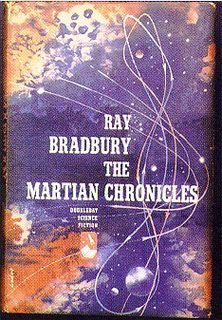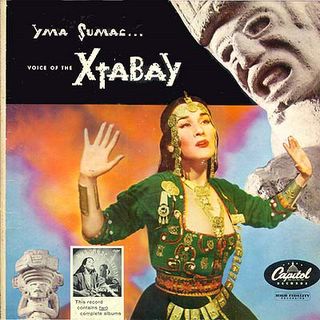
Yma Sumac, Xtabay (Lure of the Unknown Love).
Neither the Incan princess she was marketed as, nor the Brooklyn housewife Amy Camus she was rumored to be, Yma Sumac was, for a brief moment in the early 1950s, the strangest popular singer in the U.S.
She was born Zoila Augusta Emperatriz Chavarri del Castillo in Ichocan, Peru in 1927. In the early 1940s she joined the Compania Peruana de Arte and eventually married the Compania's leader, composer Moises Vivanco. Vivanco and Sumac, along with her cousin, Cholita Rivero, came to New York and performed as the Inca Taqui Trio. Sumac gained attention after a tour of the Borscht belt clubs in the Catskills and some television appearances, and Capitol Records signed her in 1950.
Her first album, a 10-inch LP Voice Of Xtabay (pronounced "shta-bye"), was released in October 1950 and quickly sold half a million copies. One can imagine the PR crew at Capitol sitting around a cigarette- and Scotch-cluttered table one night in Hollywood, conjuring up the ridiculous back story they gave Sumac--that Sumac was a Royal Sun Virgin, a direct descendant of the last Incan emperor Atahualpa, lured away from her ancestral home by anthropologists.

Sumac's voice was extraordinary--she had a four octave (some say five) range, enabling her to imitate Louis Armstrong and shatter a glass in the same breath. The music supporting her, composed by Vivanco and exotica king Les Baxter, was a fusion of Latin rhythms, Peruvian folk music and overripe Hollywood film scores. It was an early indication of a growing public taste in the '50s for bizarre "world" music; and so the reverent borrowings from Eastern music by composers like Messaien would be matched, in popular music, by grand DeLuxe cartoon "exotic" LPs--the sort of things that would gather dust in family rooms over the decades, mocked as ridiculously dated kitsch, until some hipster grandchild rediscovers them.
You can find Xtabay here, and everything from CDs to lobby cards from Sumac's official site.
More on the goddess Xtabay. "Mayan legend states that Xtabay, hidden in the form of a sharp and rigid cactus flower, comes to life when she sees a man pass by. She awaits him under the jungle trees, brushing her long, flowing hair with cactus spines until he is unable to resist her attraction.
Xtabay seduces him and destroys him in a frenzy of infernal love."
Monument to Xtabay, Mexico.
"Afternoons, when the fossil sea was warm and motionless, and the wine trees stood stiff in the yard, and the little distant Martian bone town was all enclosed, and no one drifted out their doors, you could see Mr. K in his room, reading from a metal book with raised hieroglyphs over which he brushed his hand, as one might play a harp."
In May 1950, Ray Bradbury's The Martian Chronicles was published, one of the most poetic SF novels ever written, in which Mars is an ever-changing series of mirrors for Earth, ranging from lost faery kingdom to a newly despoiled wilderness to a stage on which the slaughter of the American Indian is reenacted. Some chapters are badly dated, but the book as a whole still has a majesty to it.
No comments:
Post a Comment